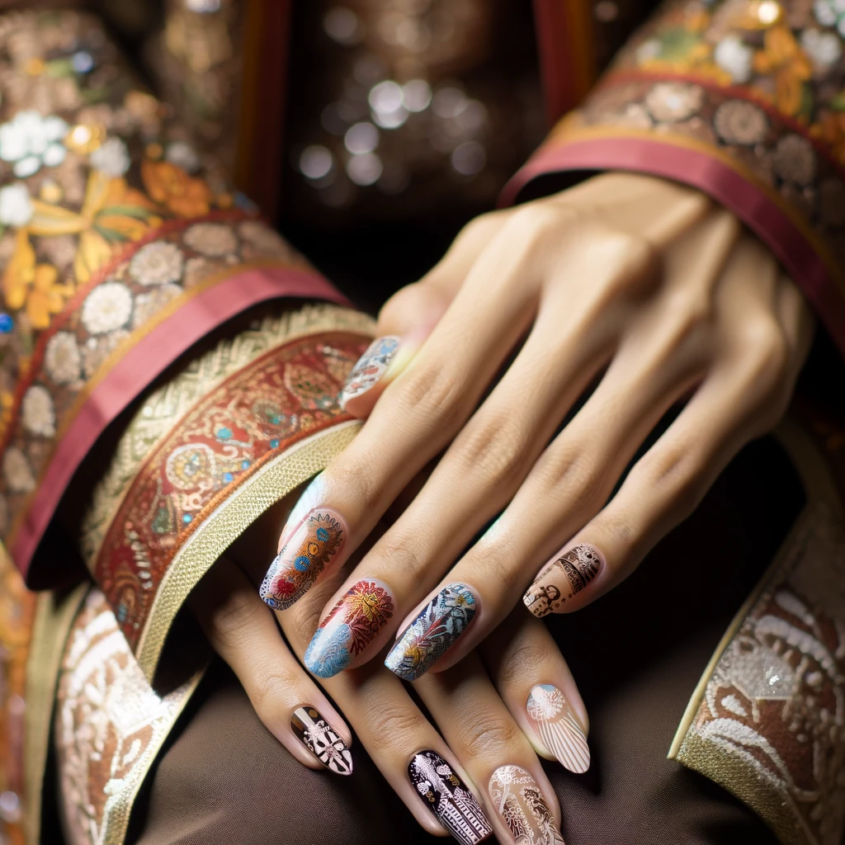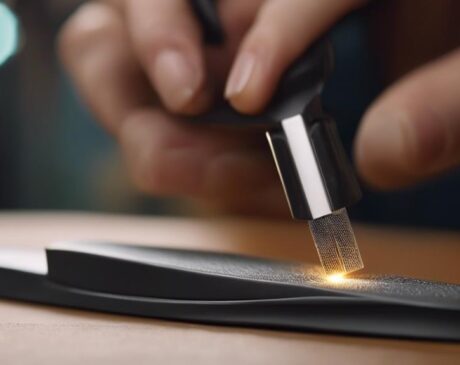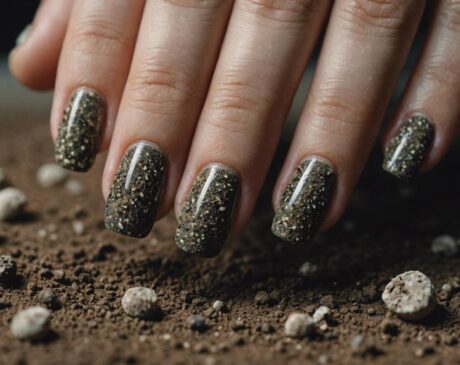Can I glue my natural nail if it breaks?

Maintaining healthy nails is not just about aesthetics. It’s vital to overall hand hygiene and health. Nails protect the tips of our sensitive fingers and toes, and their condition often reflects our overall health. Proper nail care helps prevent fungal infections, painful ingrown nails, and other nail-related conditions. In addition, well-maintained nails can boost one’s self-esteem and play an important role in a polished appearance. Regular moisturizing, keeping nails clean and trimmed, and avoiding harsh chemicals are all part of good nail care. By understanding the structure and needs of our nails, we can take better care of them and make sure they stay strong and healthy.
Understanding Broken Nails
Types of Nail Breakage
Nail breakage can occur in many forms, from minor chips to severe cracks. The most common types include:
1. Surface cracks: tiny surface cracks that appear on the surface of the nail.
2. Split nails: when the nail splits horizontally on the bed.
3. Broken corners: occurs when the edge or corner of the nail breaks off.
4. Deep cracks: deep and painful cracks that may extend into the nail bed.
Understanding the type of breakage is crucial in determining the appropriate treatment and whether nail glue can be used as a suitable repair.
Common Causes of Broken Nails
Broken nails are often the result of external factors and personal habits. Common causes include:
1. Physical trauma: hitting or banging nails against hard surfaces.
2. Environmental factors: exposure to harsh chemicals, extreme cold or dry conditions.
3. Poor nutrition: lack of essential nutrients such as biotin, protein and vitamins.
4. Excessive use of nail products: Regular use of nail polish removers or rough nail care products.
5. Exposure to water: Prolonged or repeated soaking of the nails can weaken them.
6. Health conditions: Certain diseases and medications may cause nails to become brittle.
The Basics of Nail Bonding
What is nail glue?
Nail glue is an adhesive specifically designed to repair broken nails or apply artificial nails. It is formulated to bond quickly and firmly to natural nails, providing a temporary fix for breaks and cracks. Nail glue is usually made from cyanoacrylate, a strong, fast-drying adhesive that creates a long-lasting bond.
Pros and Cons of Using Nail Glue
Using nail glue to treat broken nails has its pros and cons.
Pros:
- Quick fix: nail glue provides an instant solution to repair broken nails.
- Strengthens nails: it adds a layer of protection against further damage.
- Easy to use: the application is straightforward and can be done at home.
Cons:
- Temporary solution: it is not a permanent solution and may need to be reapplied frequently.
- Potential damage: incorrect application or removal may further damage the nails.
- Allergic reaction: some people may be allergic to the chemicals in nail glue.
It is vital to understand these pros and cons before deciding to use nail glue to repair broken nails.
Step-by-Step Guide to Gluing Broken Nails
Dealing with broken nails can be painful, but with the right tools and techniques, you can effectively glue them back into place. The following step-by-step guide will help you repair your nails with precision and care.
Prepare the nail
Before applying glue, it is important to prepare your nails properly:
- Clean nails: remove nail polish with an acetone-free remover and thoroughly clean the nail surface.
- Trimming and filing: If breaks are uneven, gently trim and file any jagged edges to prevent further tearing.
- Dry and dehydrate: Make sure your nails are completely dry. Alternatively, use a nail dehydrator to remove moisture and grease, which helps the glue adhere better.
- Protect surrounding skin: apply a small amount of petroleum jelly around the nail, but not on the break, to protect the skin from the glue.
Applying glue
Applying glue requires precision:
- APPLY GLUE: Use a toothpick or glue applicator to apply a small amount of glue to the break. Avoid using too much as it will make the nail look bumpy.
- Press: Gently press the damaged section back into place. Hold it firmly for about 10-30 seconds until the glue sets.
- Wipe off excess glue: If any glue spills, quickly wipe it off with a paper towel.
- Let it dry: Let the glue dry completely for a few minutes.
- Buff your nails: Once dry, gently buff your nails to smooth out any bumps and create an even surface.
Aftercare Tips
After repairing your nails, follow these aftercare tips:
- Avoid water: keep nails dry for at least a few hours.
- Use nail strengthener: use clear nail strengthener to add an extra layer of protection.
- Be gentle in your movements
Alternatives to Nail Glue
If you don’t want to use nail glue or don’t have any on hand, there are other effective alternatives.
Nail Tape and Nail Stickers
Nail tape and nail stickers are great alternatives:
Nail Tape: these are tapes that can be cut to the right size and used to hold broken parts together. Nail wraps: these are made of silk or fiberglass and cover the broken area and seal it with nail resin.
Minor Breakage with Clear Polish
For minor breaks, clear nail polish can be a quick fix:
- Apply a coat of clear polish to the break.
- Let it dry, then reapply as needed to reinforce the area.
Prevention is Better than Cure
Taking preventative measures is key to avoiding broken nails.
Tips for Stronger Nails
- Nutrition: eat a balanced diet rich in vitamins and minerals.
- Moisturize: Keep your nails hydrated with oils and moisturizers.
- Regular trimming: Trim your nails regularly to prevent scratches and tears.
- Use nail hardeners: Incorporate nail hardeners into your daily care routine.
Habits to Avoid
- Biting or Picking: Avoid biting your nails or picking at your cuticles.
- Harsh chemicals: Limit exposure to harsh chemicals, including cleansers.
- Improper filing: Avoid aggressive filing and file in one direction.
By following these steps and tips, you can effectively manage broken nails and take preventative measures to maintain strong, healthy nails.
When to See a Professional
While many minor nail problems can be addressed at home, there are certain situations that require professional intervention. Being aware of these conditions can prevent further complications.
Signs of Infection
If you notice any of the following signs, it’s time to consult a professional:
- Redness and swelling: any redness or swelling around the nail may indicate an infection.
- Pain and discomfort: Constant or sharp pain around the nail area.
- Pus or discharge: The presence of pus or any unusual discharge.
- Color change: If the nail or surrounding skin changes color, such as turning black, green or deep red.
- Warmth: an unusual warm feeling in the nail or surrounding area.
Limitations of Home Remedies
Home remedies, including nail glue, have their limitations:
- Temporary fixes: they are usually temporary and cannot replace professional treatments for more serious problems.
- Risk of worsening: incorrect application may exacerbate the problem.
- Underlying disease: home remedies are ineffective for problems caused by underlying health issues.
Key points to review:
- It is vital to understand the structure and type of nail breakage.
- Nail glue can be a convenient tool for making minor repairs, but it is also important to use it correctly and understand its limitations.
- Alternatives to nail glue, such as nail tape and clear polish, can be effective in solving minor problems.
- Preventive care is vital to maintaining healthy nails, including proper nutrition and avoiding harmful habits.
Final thoughts on nail care:
Nail care is an important aspect of personal hygiene and health. While DIY methods can be effective in addressing minor issues, recognizing when professional help is needed is crucial. Regular care, balanced nutrition, and careful maintenance will keep nails strong and healthy, minimizing the chances of breakage and infection.
Frequently Asked Questions
Is it safe to use Power Gel on broken nails? While Power Gel can temporarily repair broken nails, it is not suitable for medical use and may cause skin irritation or allergic reactions. Nail glue is a safer alternative.
How long can I keep my glued nails before I need to see a professional? Ideally, glued nails should stay in place for a few days to a week. If the fracture worsens or fails to heal, seek professional advice.
Can I paint on my glued nails? Yes, once completely dry you can paint over the glued nail, but avoid using nail shampoos too often as they can weaken the glue.
Are there natural remedies for broken nails? For minor cracks, natural remedies such as using vitamin E oil or a mixture of tea tree oil and lavender oil can help. However, they are more effective as preventative measures than repairing existing faults.
How can I tell if my broken nails are due to a health problem? Ongoing nail problems, changes in nail color or texture, and breakage for no apparent reason may be signs of a health problem. Consult a healthcare professional for an accurate diagnosis.




